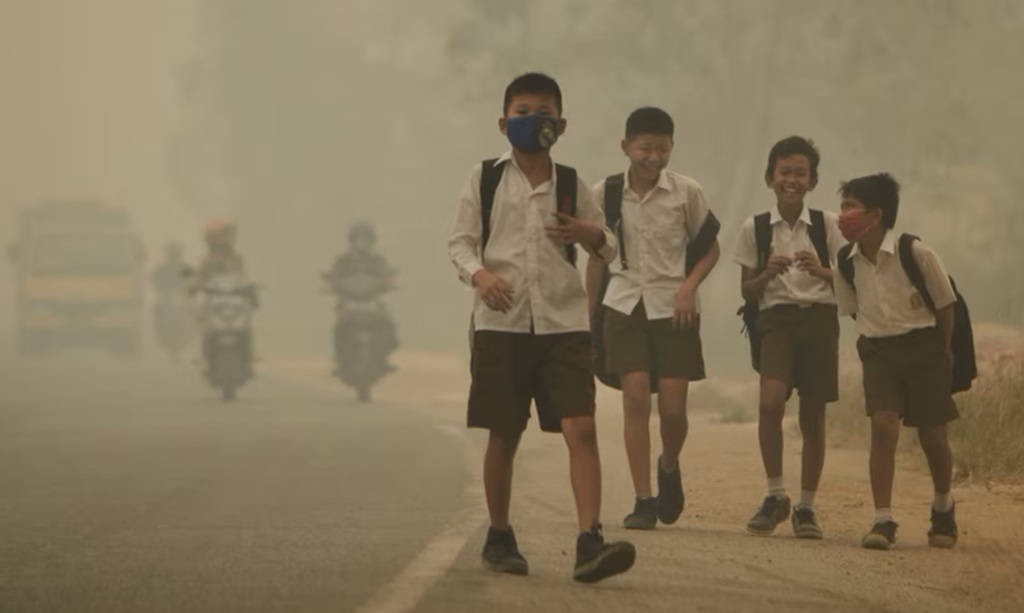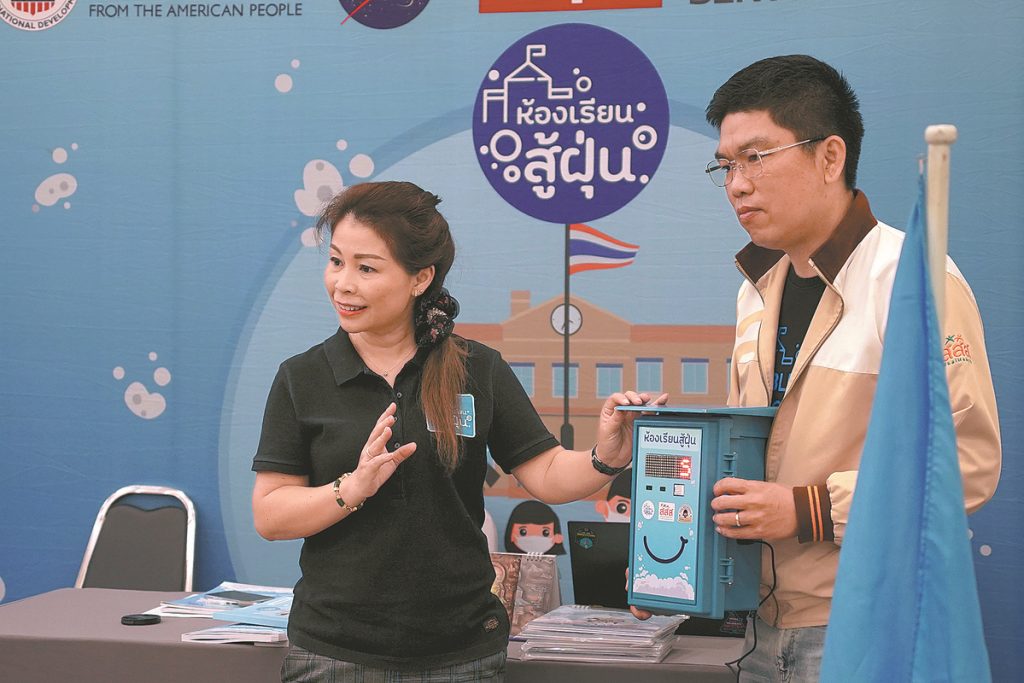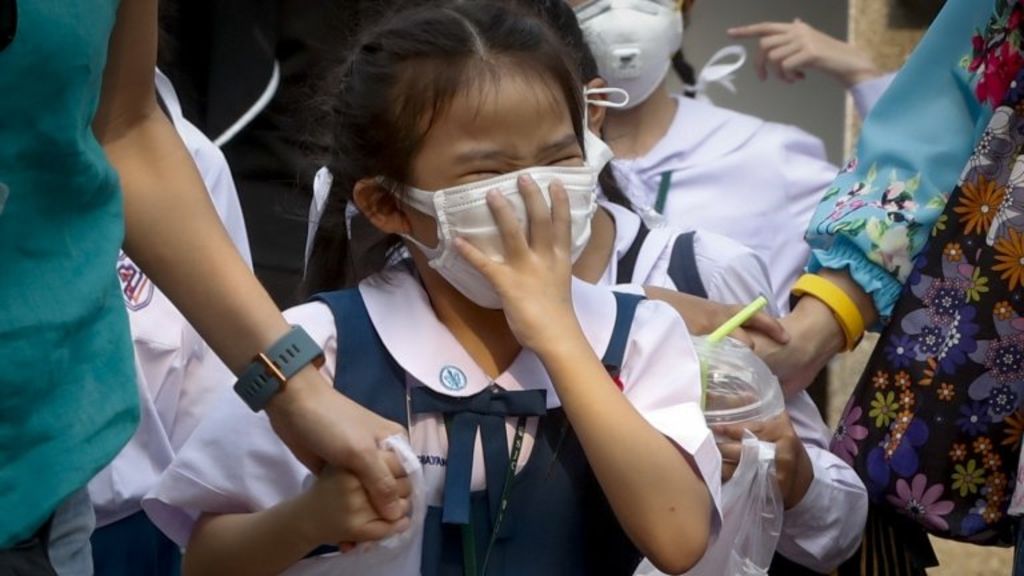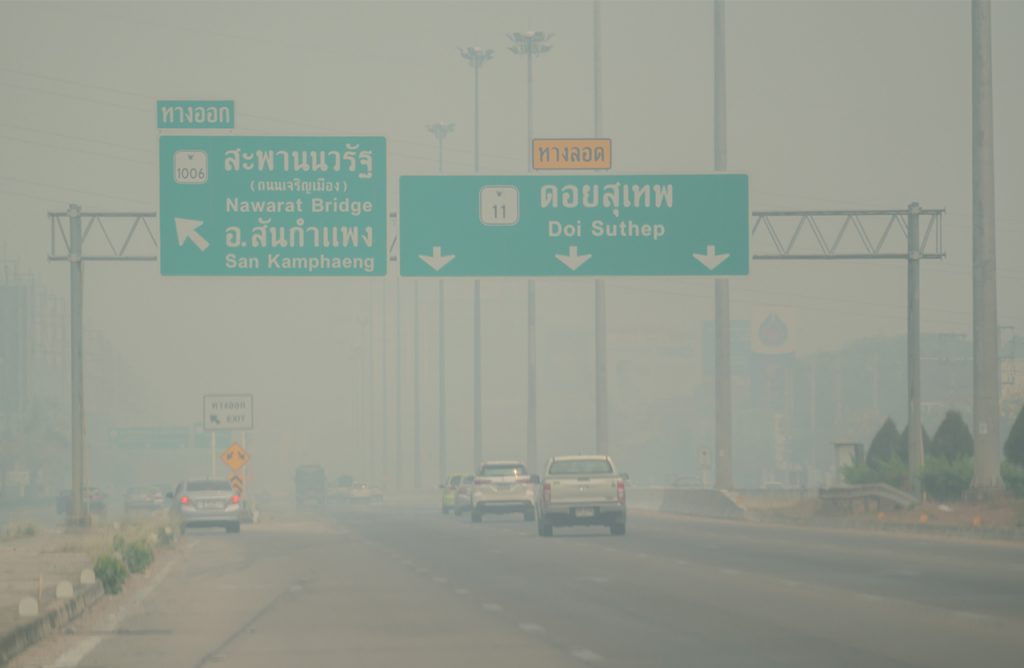The issue of PM 2.5 air quality in Thailand’s northern area has become a reoccurring environmental crisis throughout the winter, lasting many years. This has become a recurring problem in northern Thailand, with the government pledging to address the matter.
The impact of PM 2.5 dust in northern Thailand has become more severe and long-lasting, to the point where citizens in Chiang Rai and Chiang Mai Provinces cannot live normally.
For many years, “burning” has been a crucial factor. The smoke particles produced are strongly associated with multiple hot spots, frequently caused by land burning in northern Thailand and neighbouring countries.
This has created the idea that “local residents,” largely involved in agriculture, are the core cause of the smoke particles from field burning, especially in places with single-crop cultivation like maze.
These operations emit dangerous pollutants into the atmosphere, producing a thick haze that blankets the region at certain periods of the year.
The haze reduces vision and air quality and poses major health hazards, particularly to vulnerable groups. Fine particulate matter (PM 2.5) exposure can cause respiratory troubles, cardiovascular problems, and other negative health impacts.
Furthermore, the haze adds to environmental deterioration and reduces regional biodiversity. Addressing the annual haze problem involves a collaborative effort by government officials, local people, and environmental organisations.
Implementing sustainable agricultural methods, limiting industrial emissions, and raising public awareness are all critical measures towards resolving the haze situation in Northern Thailand.
School Teaches Children About PM2.5 Air Quality
Mae Sai, the northernmost district of northern Thailand’s Chiang Rai province, is a significant border crossing with Myanmar, and its Doi Nang Non includes an air quality station for pupils at Banpafae-nongor-sansaimoon School in Mae Sai.
According to Nion Sirimongkollertkul of the Faculty of Engineering at the Rajamangala University of Technology Lanna in Chiang Rai, the mountain is only a few kilometres away from the school, and we taught students a simple method of recognising air pollution levels using visibility between the school and Doi Nang Non.
“If they can barely see the mountain, the air quality is hazardous to human health, and they should avoid going outside,” said Nion, who has been researching air pollution for almost a decade.
When pregnant, Nion first became aware of Thailand’s air pollution and its impact 16 years ago. Toxic haze pollution has been northern Thailand’s most severe environmental calamity during the last decade.
A haze is a light mist created by airborne water or dust particles, making it difficult to see distant objects properly.
“Haze season” now refers to the time between February and April.
According to Swiss air quality business IQAir, Chiang Mai, northern Thailand’s cultural and tourist hub with a population of around 128,000 people, was the world’s most polluted city in April last year, ahead of hotspots such as Lahore in Pakistan and Teheran in Iran.
“Several causes contribute to smog, including climate change and industrial pollution. However, forest fires and agricultural burning are the leading causes of harmful smog,” Nion stated.
“To save on costs, farmers remove the undergrowth by burning it for cultivating new crops such as sugar cane, maize, and even rice.”
According to Somporn Chantara, a chemistry professor at Chiang Mai University, the predominant presence of PM2.5 — health-damaging particulate matter with a diameter of 2.5 micrometres or less — gives northern Thailand’s smog its distinctive smokey scent.
Allergies in Children from PM2.5 Haze
According to Nikon, most of the poor air quality in northern Thailand comes from agricultural burning in neighbouring countries such as Myanmar and Laos, particularly around their borders.
“Taking Mae Sai as an example, despite rigorous controls on agricultural burning in recent years, it has suffered greatly from the haze. “It’s not a problem that can be solved from one side,” she explained.
Tongsuk Riyakad, a sixth-grade teacher at Banpafae-nongor-sansaimoon School, stated that the yearly health checks for the approximately 200 children revealed increased allergies in recent years.
Last year, 30 students were reported to have allergy symptoms caused by air pollution, such as tears, runny noses, and respiratory issues.
“Smog has a long-term impact on people’s health. We are concerned about the children who may be suffering from more serious conditions. “Polluted air also increases the risk of cancer,” she explained.
Worst Air Quality in the World
According to the Thai Public Health Ministry, haze pollution has afflicted more than 2.6 million individuals over the last three years. Chiang Mai had the greatest number at about 650,000, followed by Chiang Rai with around 467,000. According to Nikon, air pollution has also impacted tourism, raising health concerns.
“The northern region, popular among tourists for its natural scenery, saw a sharp decline early this year when the PM2.5 reading soared to 400 and higher,” Nixon said.
A year ago, children at Banpafae-nongor-sansaimoon School were introduced to the “Blue School” programme for air pollution education.
The project, funded by Thai and international organisations, began in 2021. It sought to educate primary school pupils on ways to combat air pollution at school.
The programme trained instructors through numerous workshops, and the teachers then passed on their knowledge to their students.
Eventually, we hope to transform students into ‘active citizens’ who can defend themselves and pass on knowledge to their family members, resulting in direct health benefits,” said Nion, the program’s coordinator. The programme teaches students about particulate matter, how it affects human health, and how to cope effectively.
Children Mark PM2.5 Detector Readings
Previously, pupils rarely wore masks on polluted days. However, many people have started wearing masks on smoggy days and even asked their family members to do the same,” added Tongsuk.
So far, more than 200 Thai schools have participated in the programme. According to Nikon, another 400 schools, including those in Bangkok, will join by the end of the year.
“Children are among the most susceptible populations. We trained them to mark PM2.5 detector readings with five different colours: blue, green, yellow, orange, and red. If the real-time monitoring index is high, teachers will adapt school activities and curriculum,” she added, adding that physical education sessions can be held in a closed hall.
Nion showed an air quality monitor, which was the size of a notebook, at Banpafae-nongor-sansaimoon School. “It’s made in Thailand but the chip inside is from China,” she said.
Last August, a delegation of Chinese scientists travelled to northern Thailand to help with the haze problem, thanks to Sittikorn Chantadansuwan, minister-counselor at the Thai embassy in Beijing.
They arrived with cutting-edge purifiers created by the Shanghai Institute of Ceramics, a Chinese Academy of Sciences branch. It is roughly the size of a small refrigerator and can be used indoors and outdoors, with each unit capable of purifying 3,000 to 10,000 cubic metres of filthy air each hour.
ESP removes pollutants from the air
“The purifier uses an electrostatic precipitator, or ESP, without a filter, which saves costs,” said Sun Jing, a Shanghai Institute of Ceramics researcher. ESP is a gadget that employs an electrical charge to remove pollutants from the air.
Sun claimed that this cleaner is 90% more efficient than traditional ones. “For (particulate) matter with a diameter of 5 micrometres or lesser, the purifying efficiency can be even higher, up to 99 per cent,” he stated.
The tallest, up to 16 metres, can purify 50,000 to 130,000 cubic metres of air every hour, making it ideal for large indoor and semi-open environments. Last year, Sun’s team sent four miniature purifiers to Thailand, one of which is preserved in the Banpafae-nongor-sansaimoon School’s library.
After five months, the ESP modules had a thick layer of dust. The record shows that PM2.5 levels in the library could be kept around 50 on average, although outside, they were frequently above 200.
“We are delighted to get support from Chinese scientists. “China has had great success combating haze in big cities, and their experiences are valuable to us,” stated Mae Sai Mayor Chaiyon Srisamoot.
“We’ve seen emissions from diesel fuel and smog from agricultural burning since childhood but haven’t been aware of the problem and its long-term threats to health until the use of air quality indicators about five or six years ago when the haze became too severe, and resulted in allergies,” he said.
Chaiyon mentioned his aim of having larger purifiers in Thailand to address significant concerns about haze pollution.
He stated that China’s innovative cleaners are essential in safeguarding people, particularly children and the elderly, from health risks.
“However, public education and collaborative efforts from all parties to minimise pollution sources and promote health protection remain critical. This is the ultimate solution for long-term gain, and it requires help from not only Thailand but also neighbouring countries,” he stated.
She stated that the team has created larger purifiers using the same technique, which has proven effective in China.











